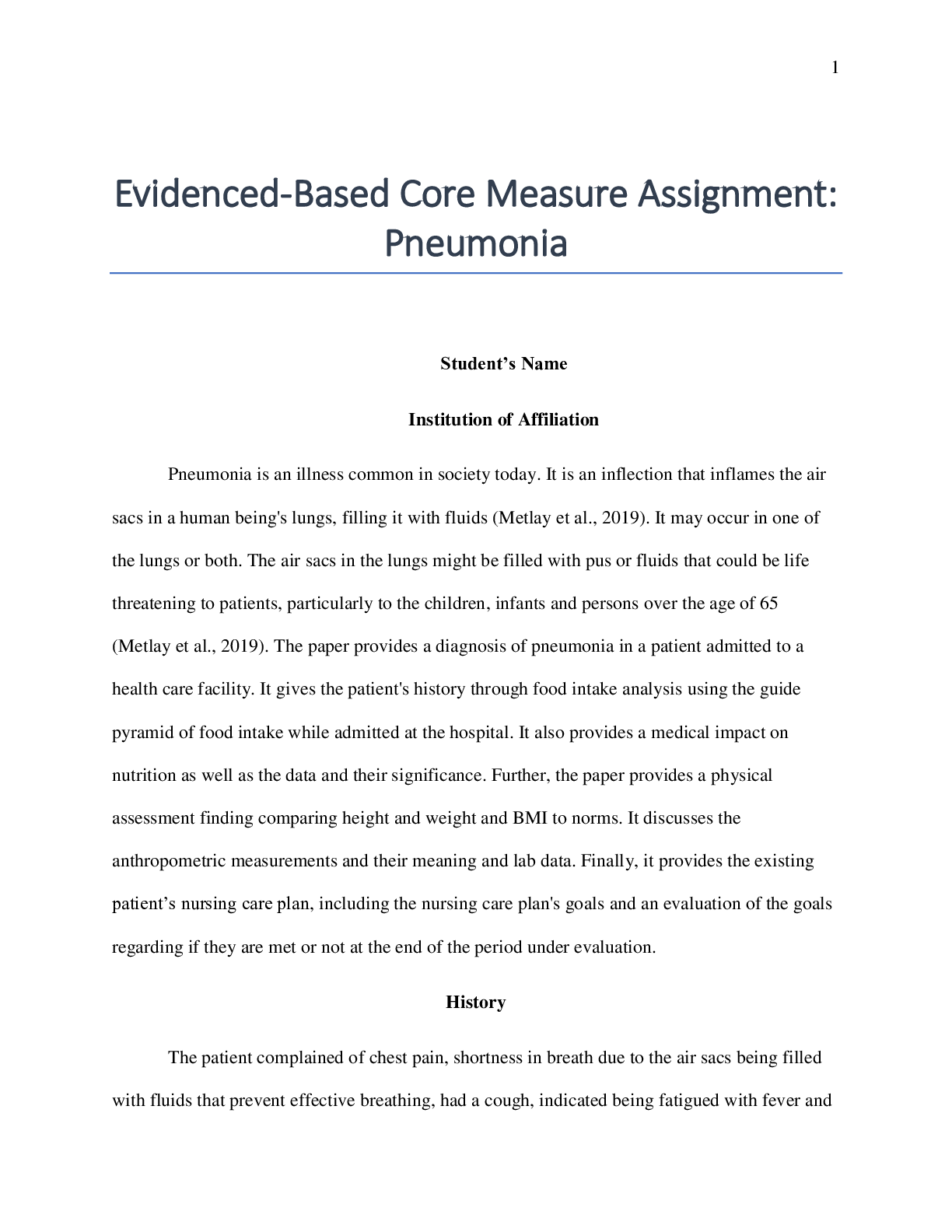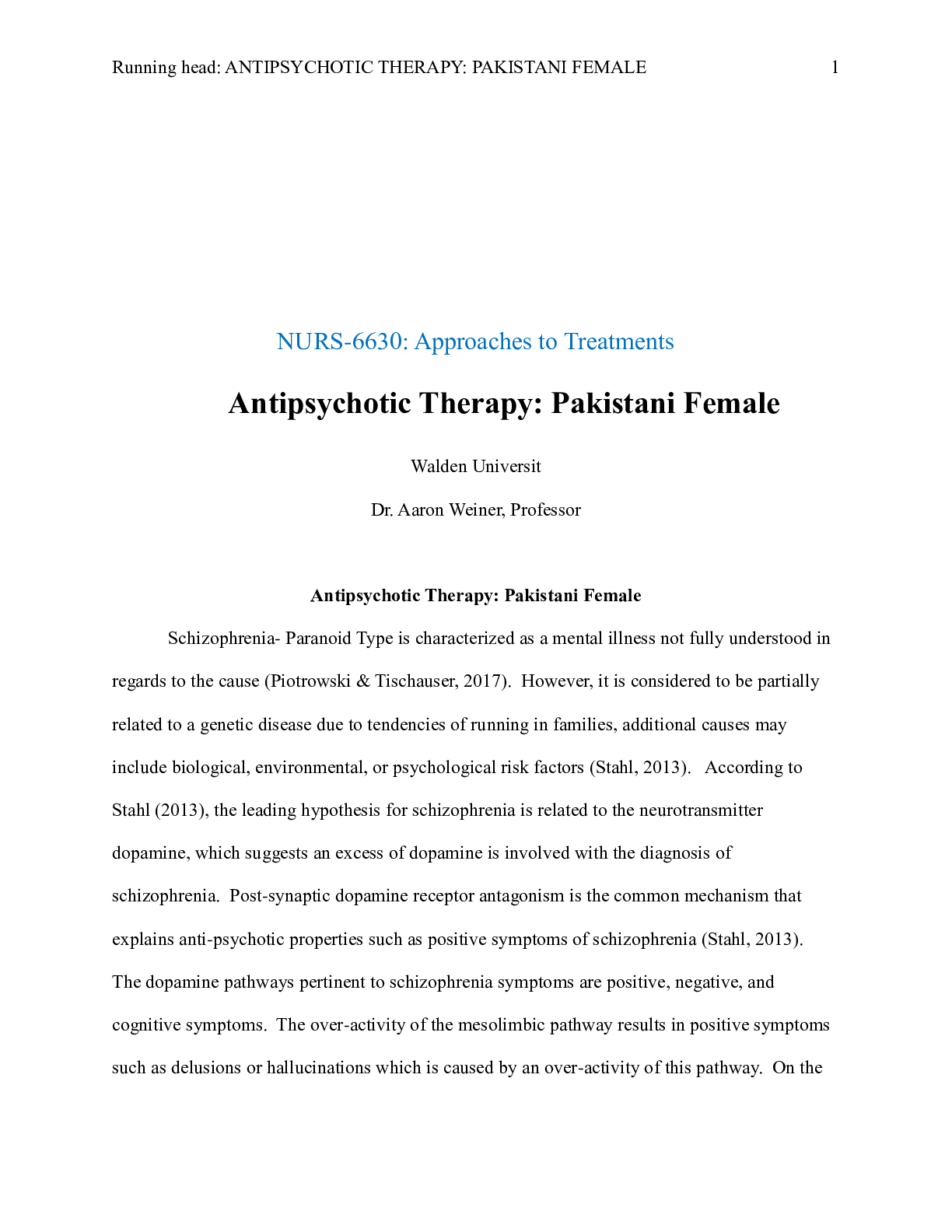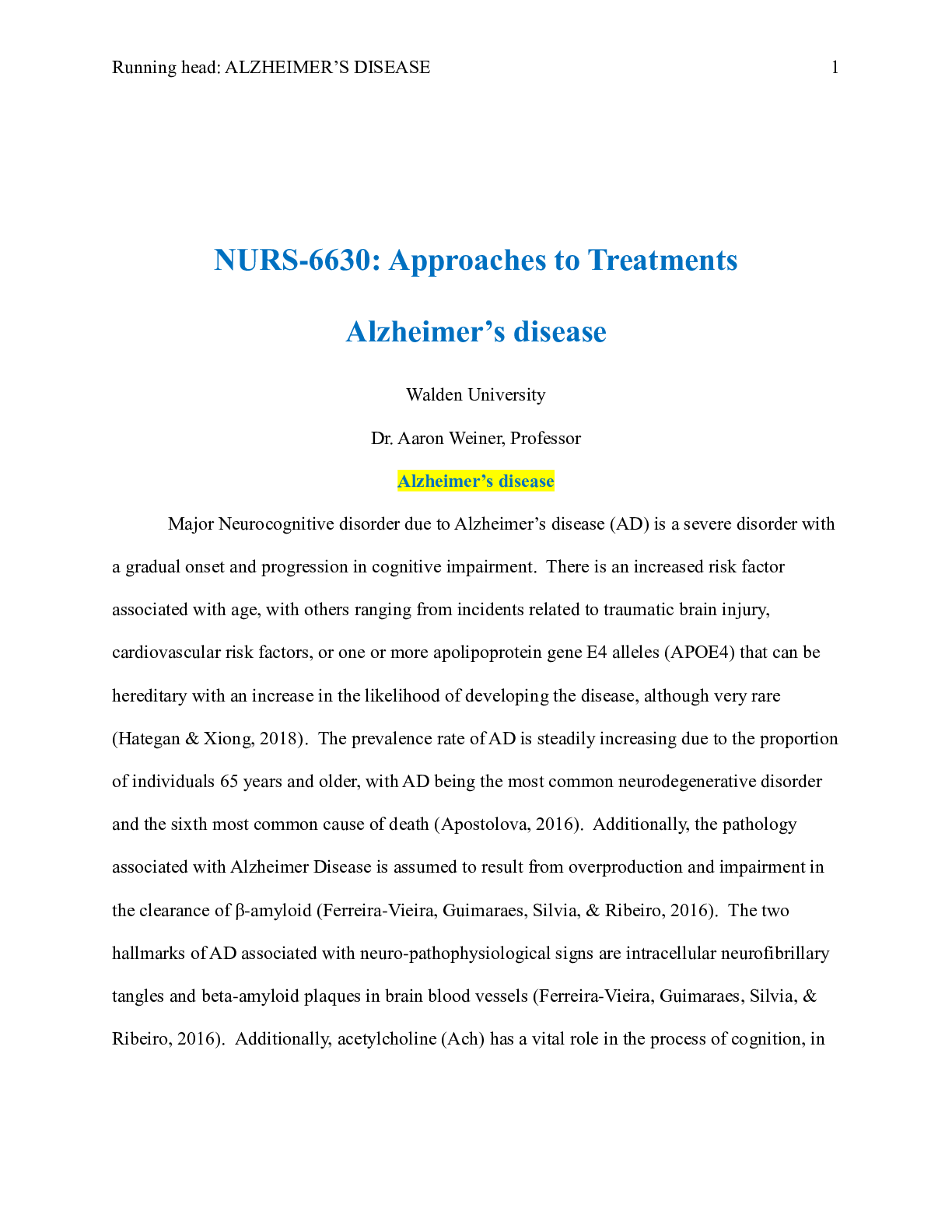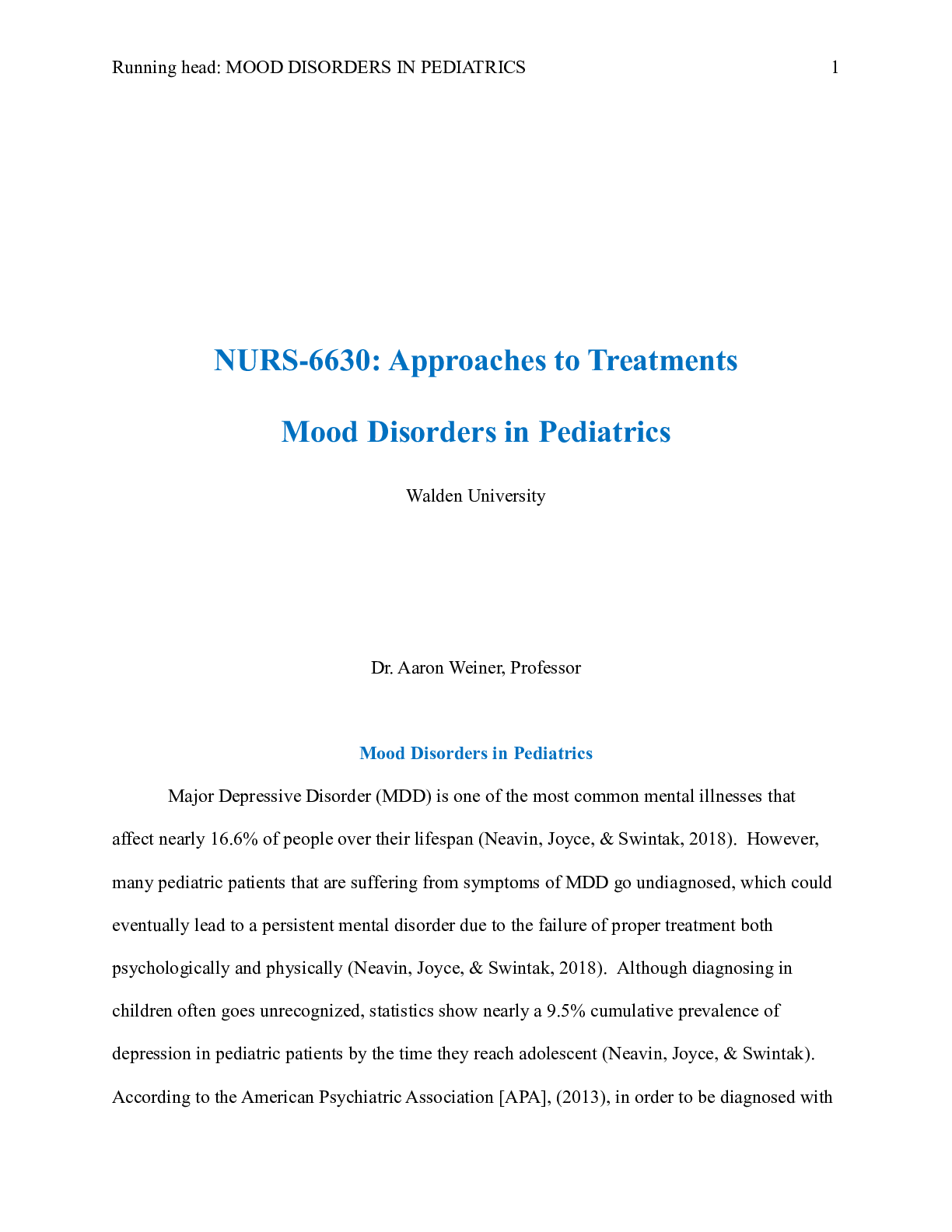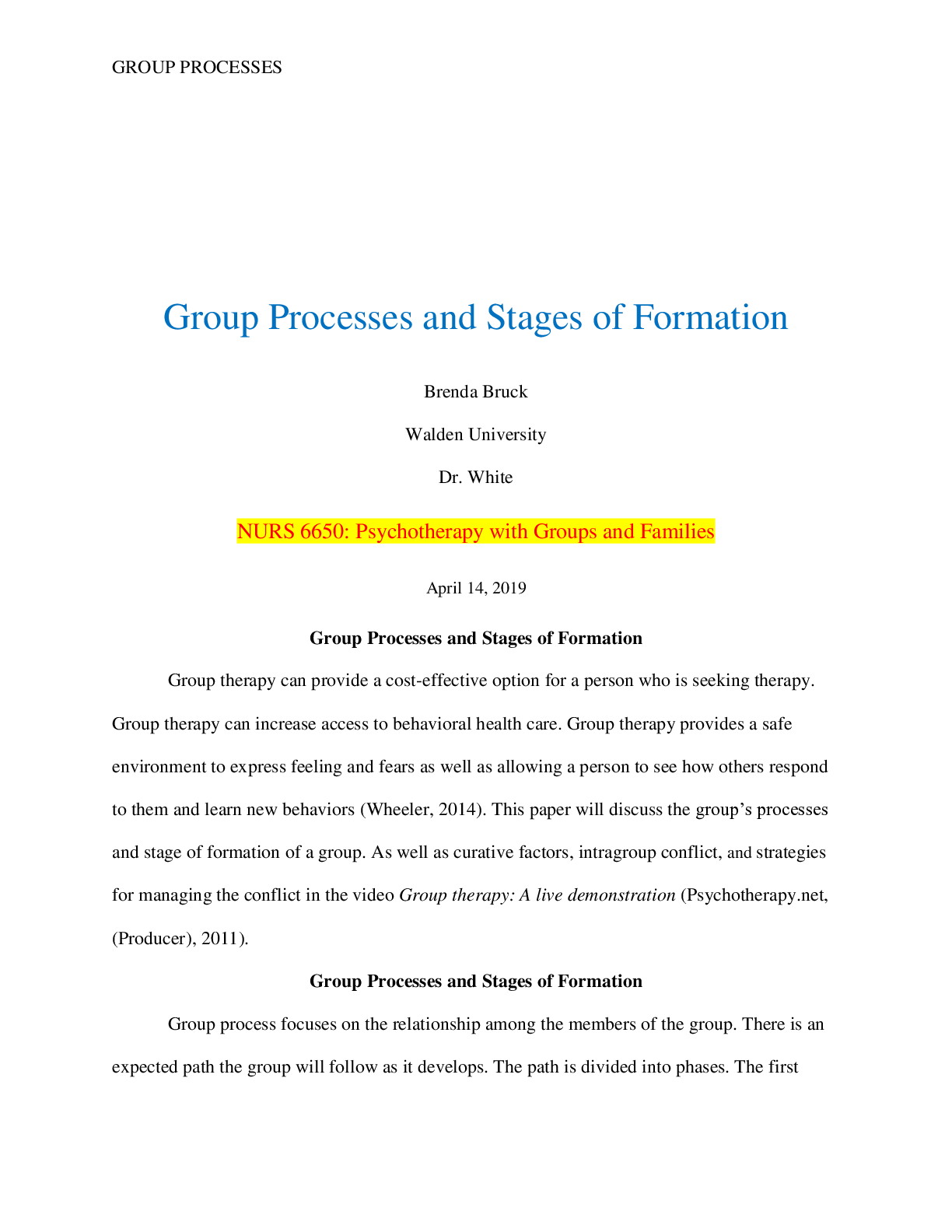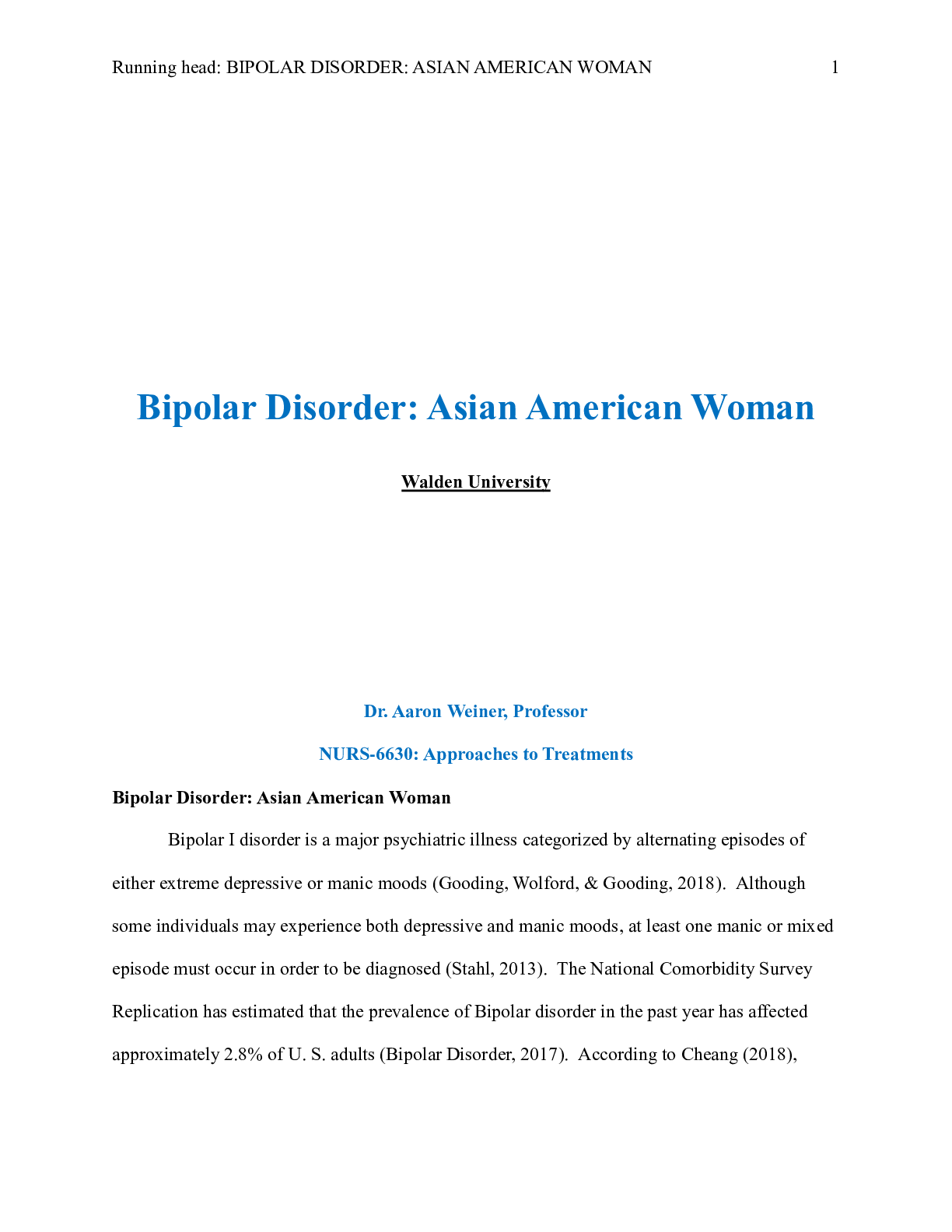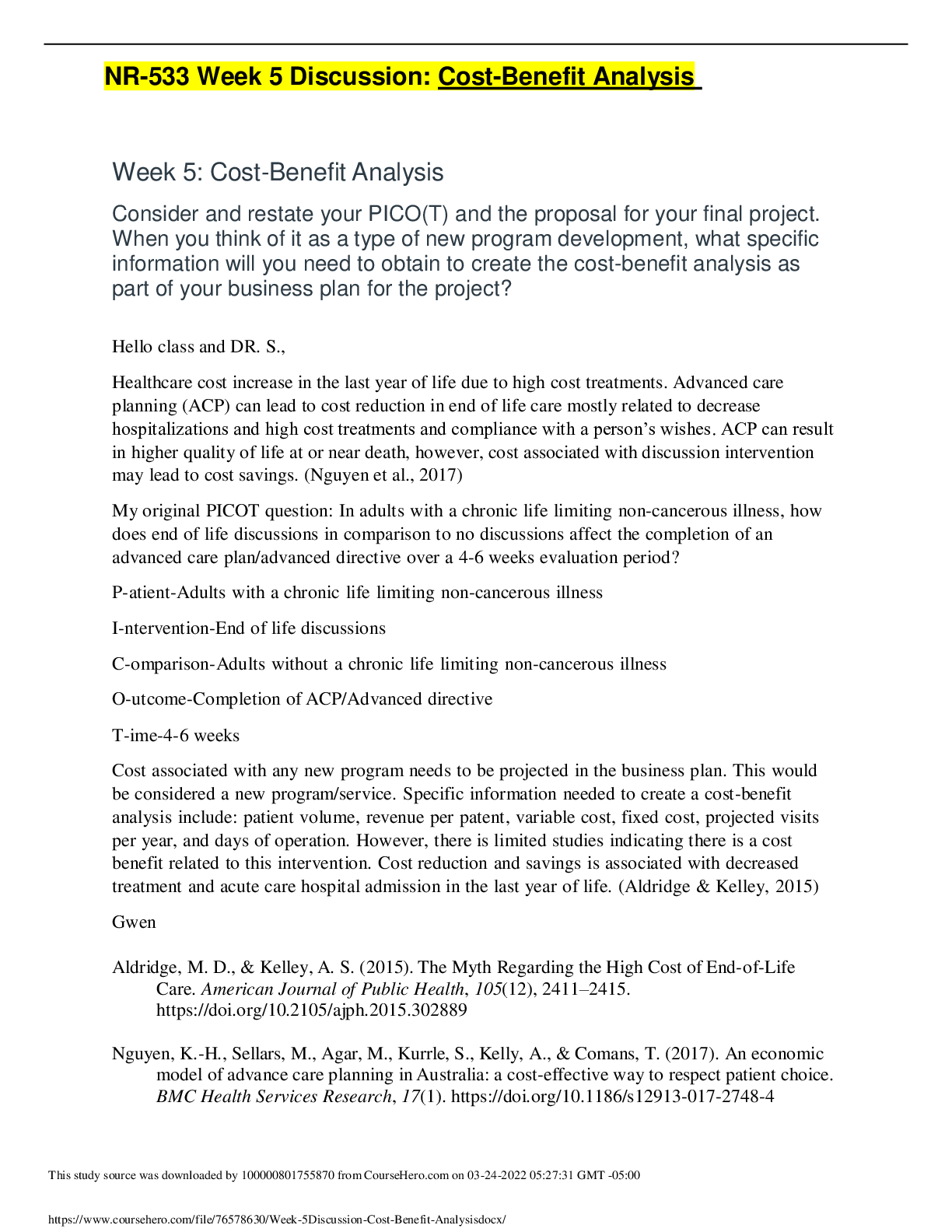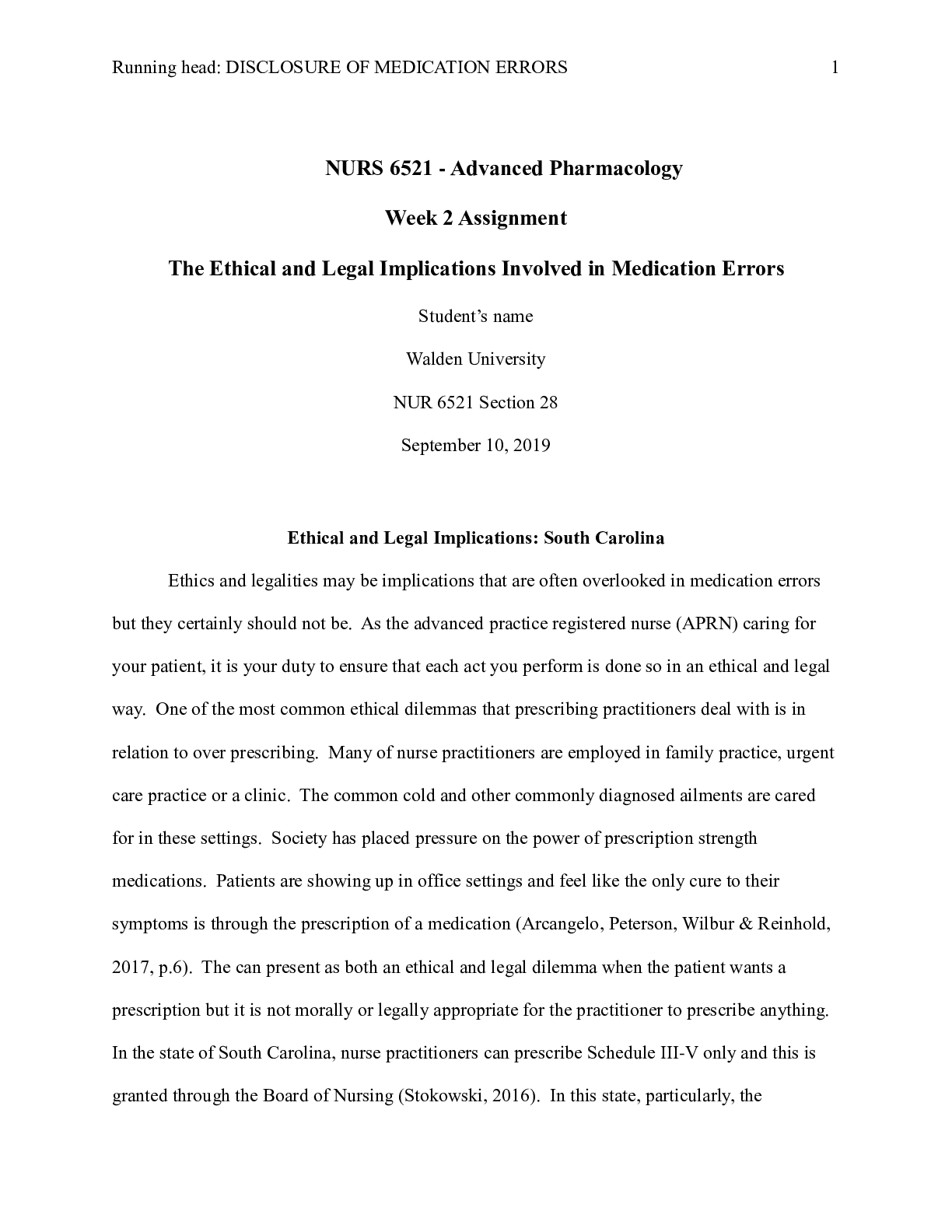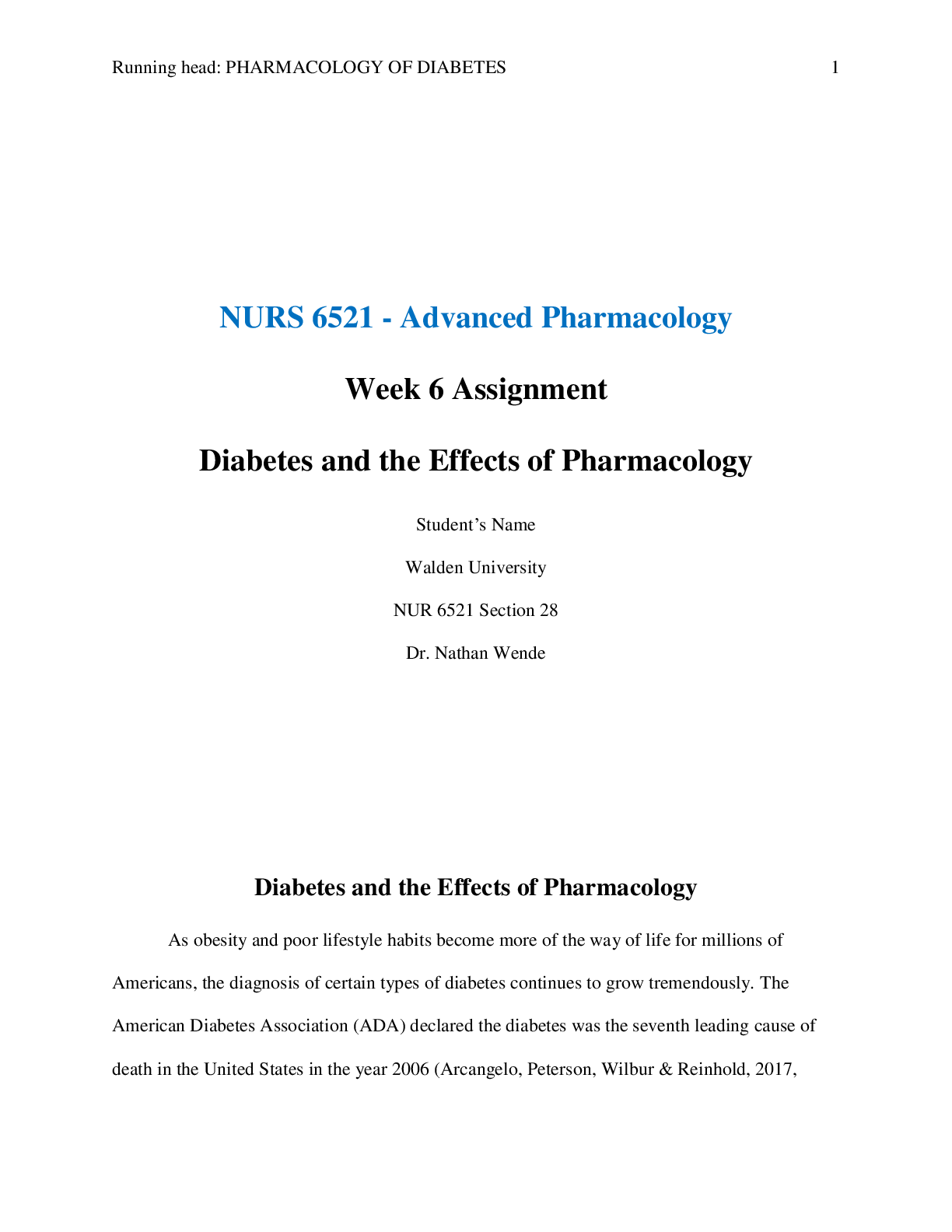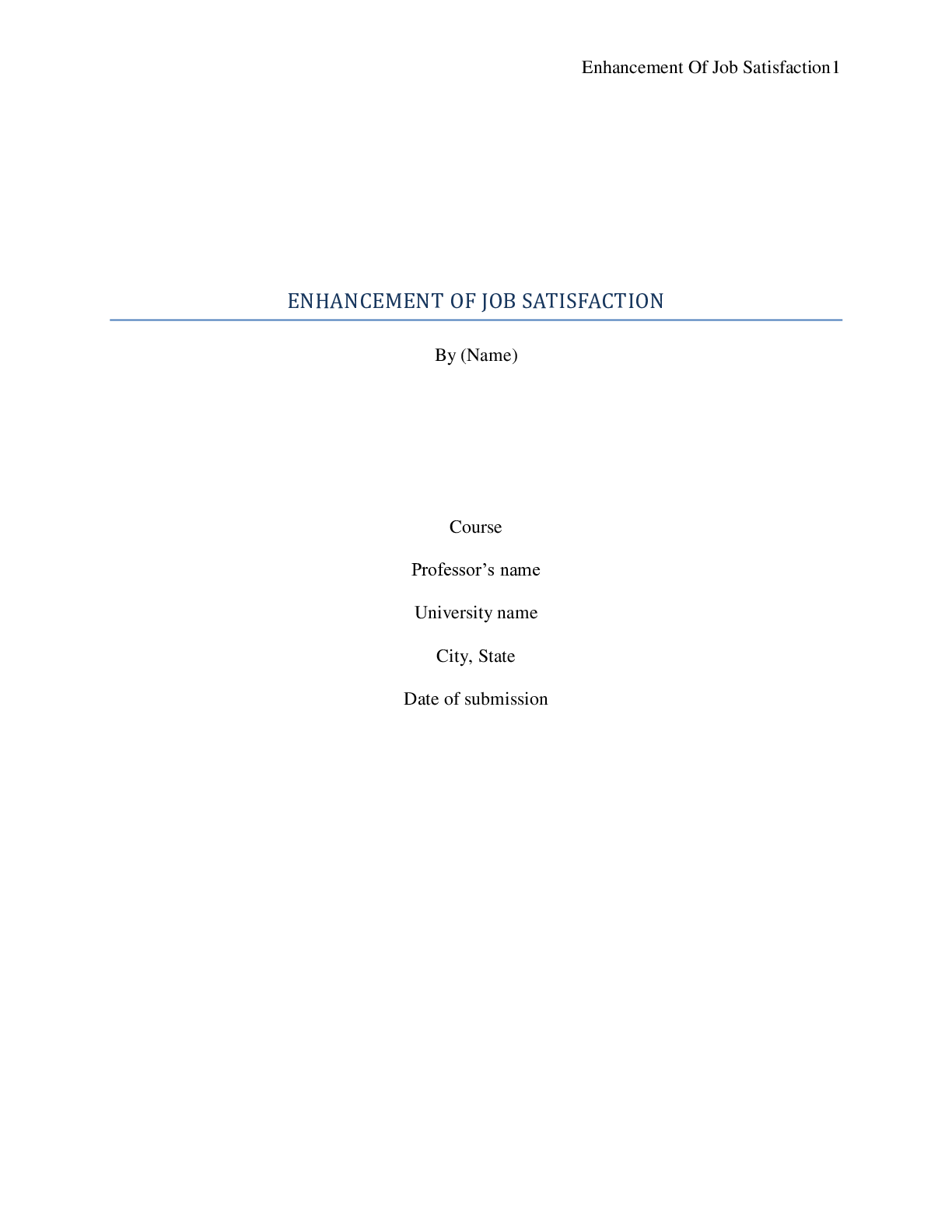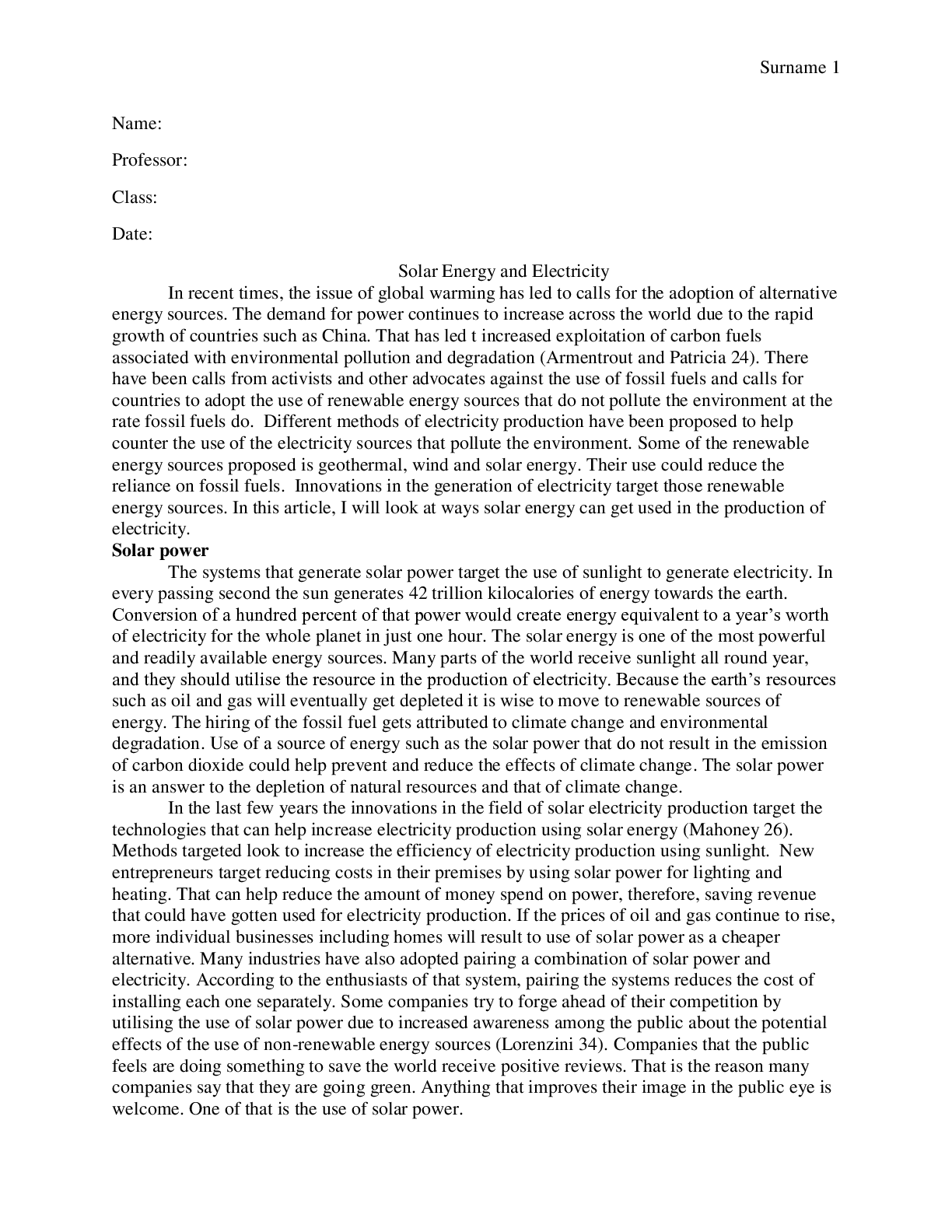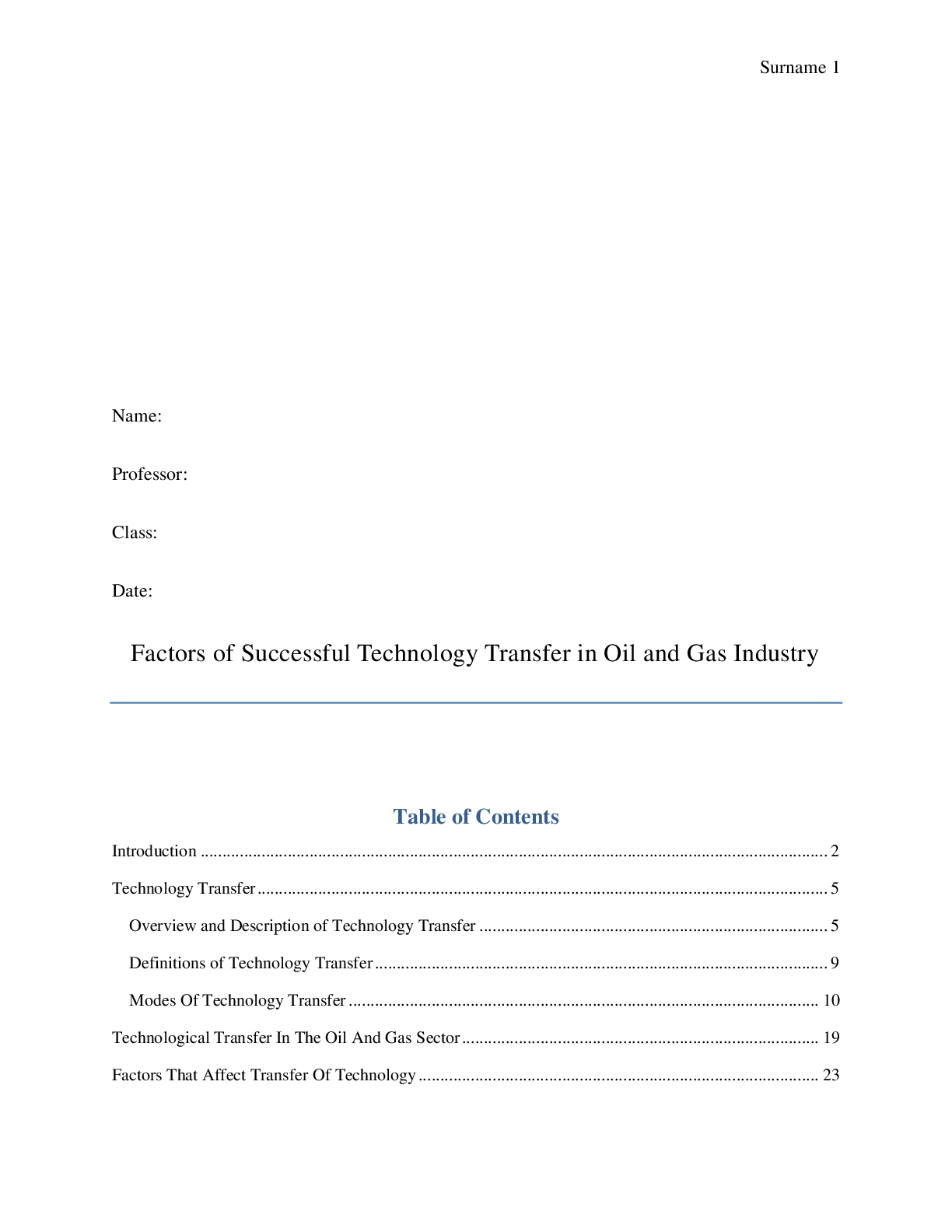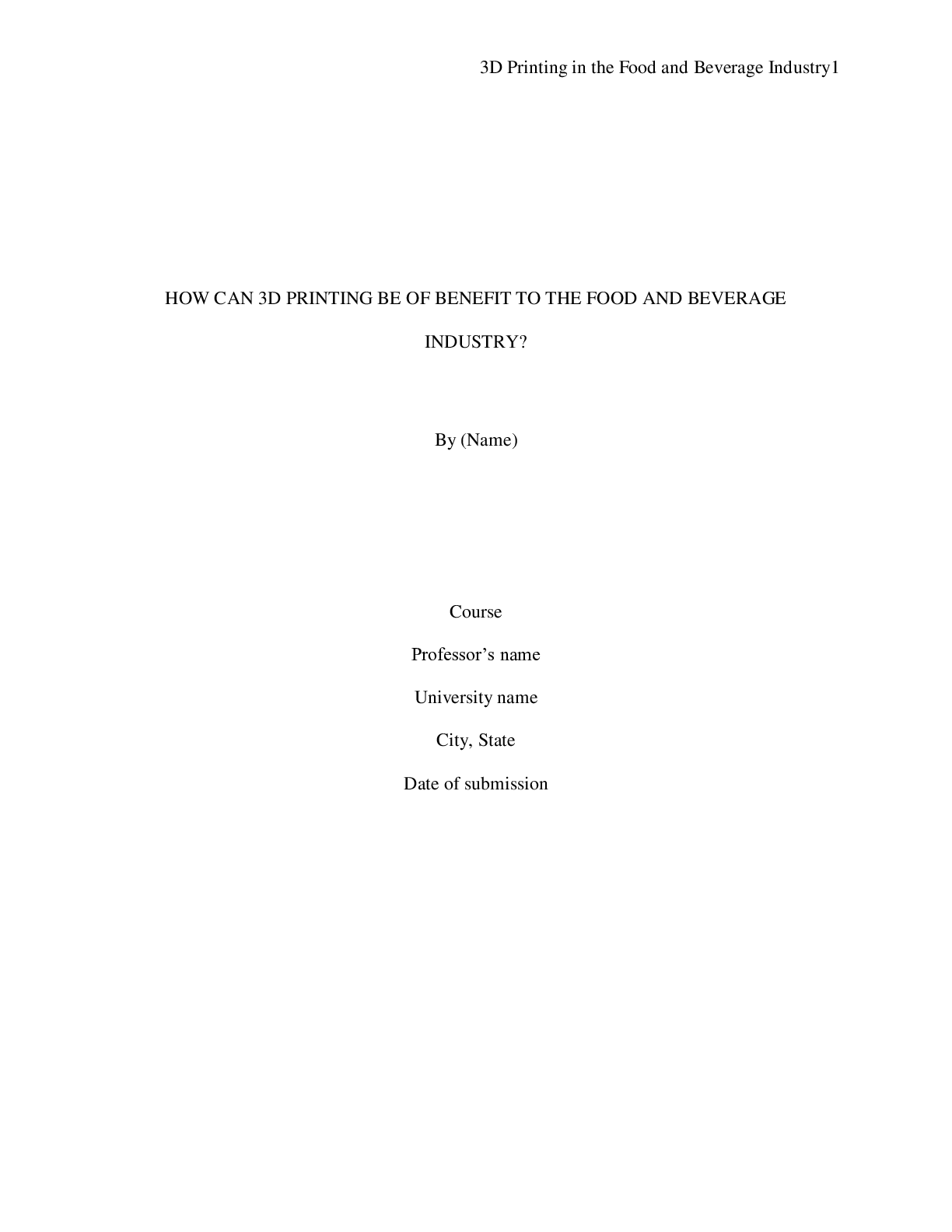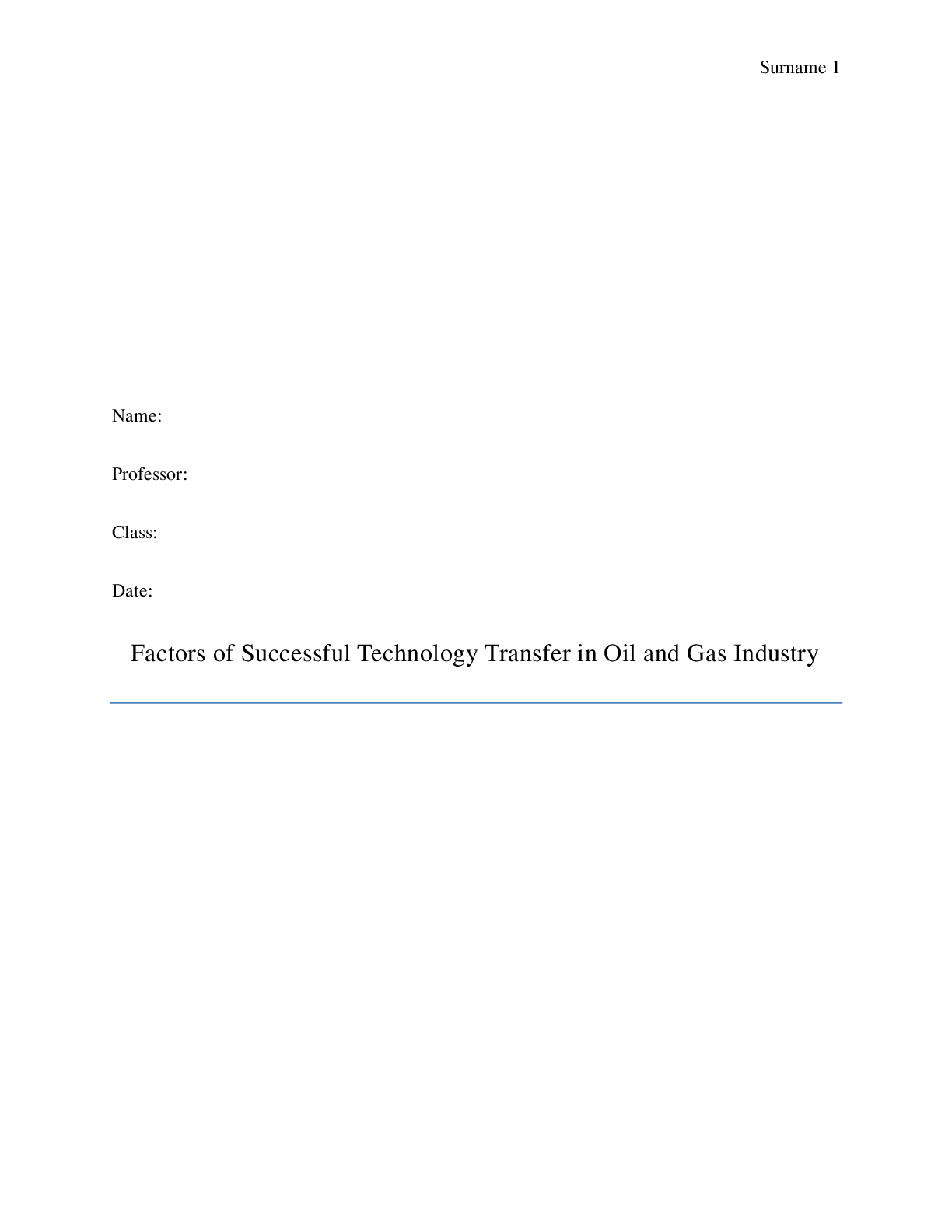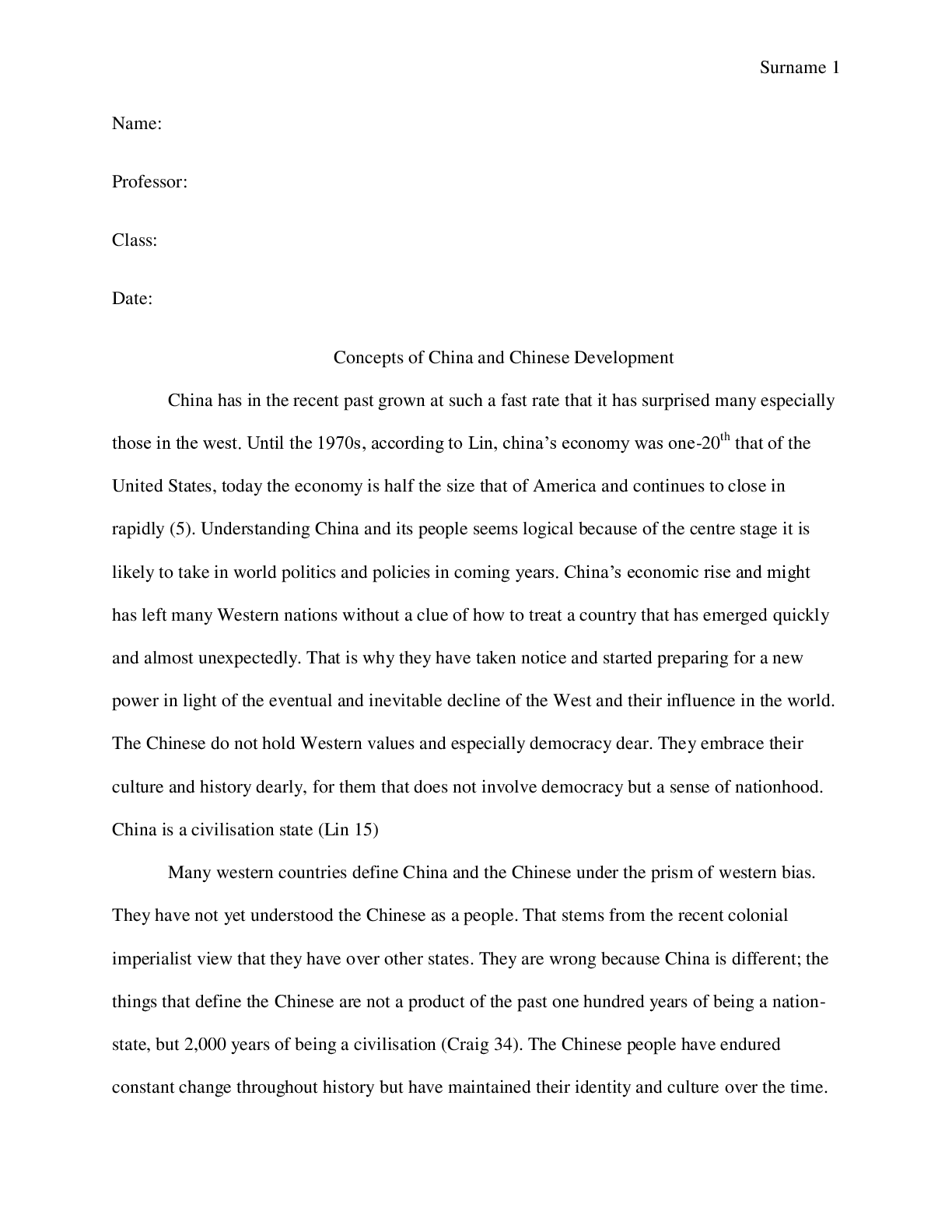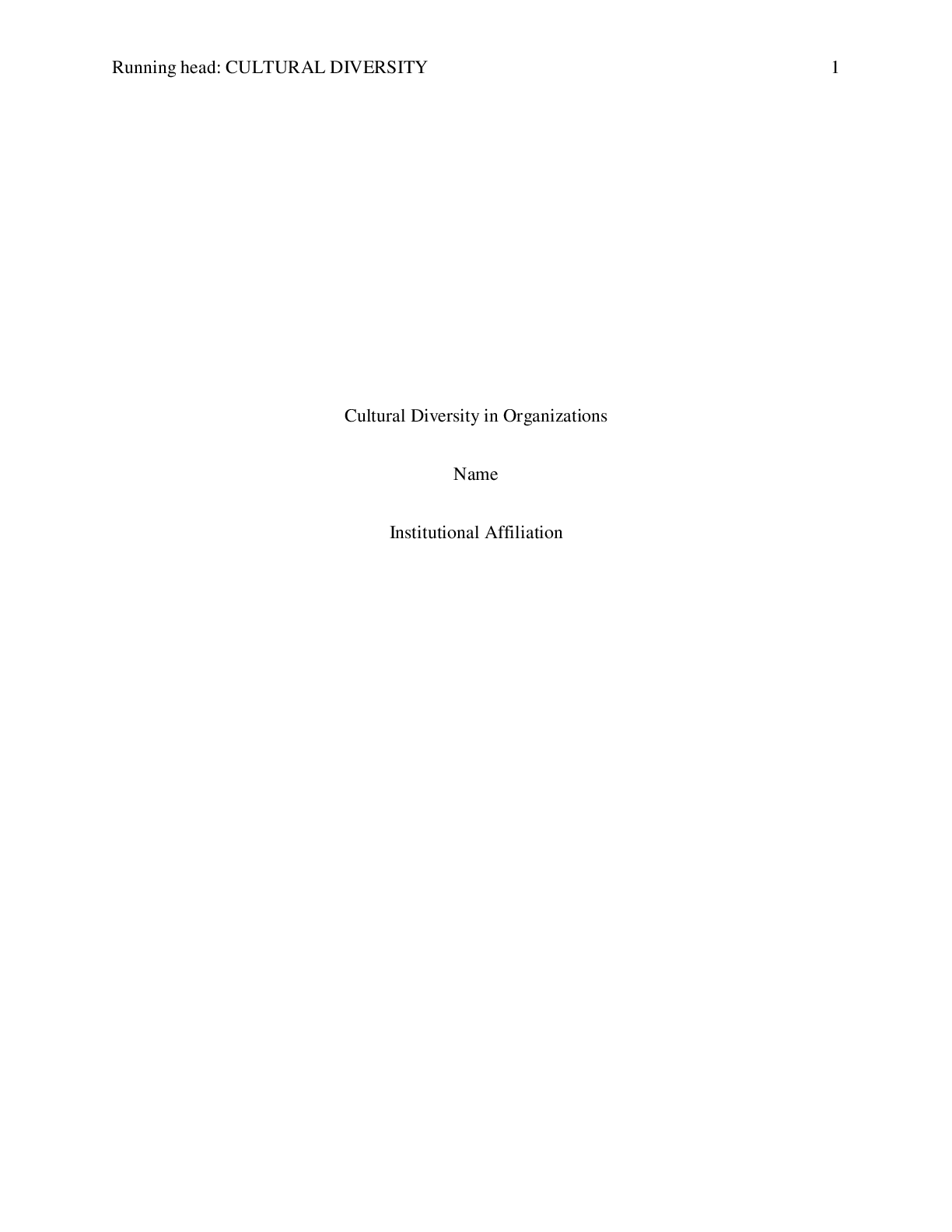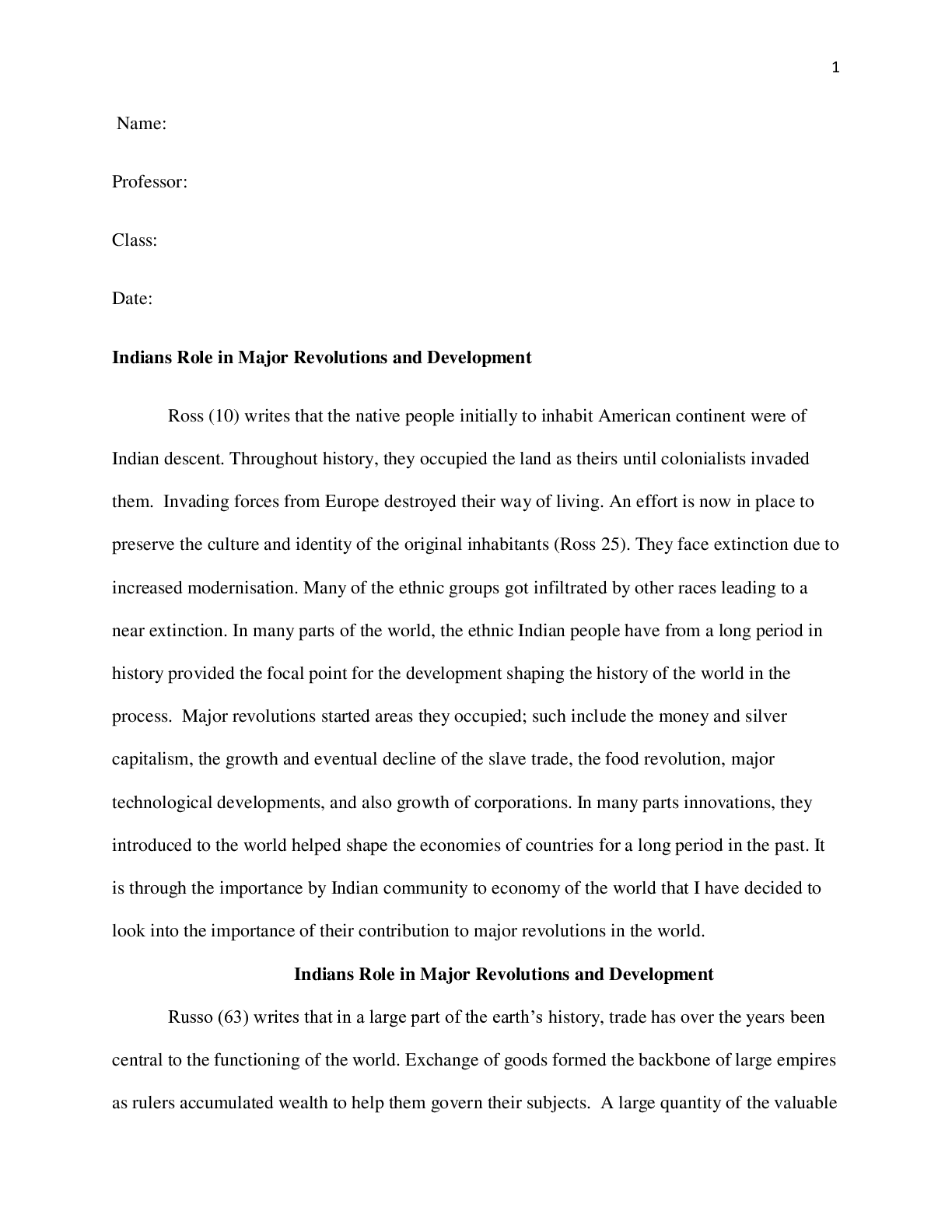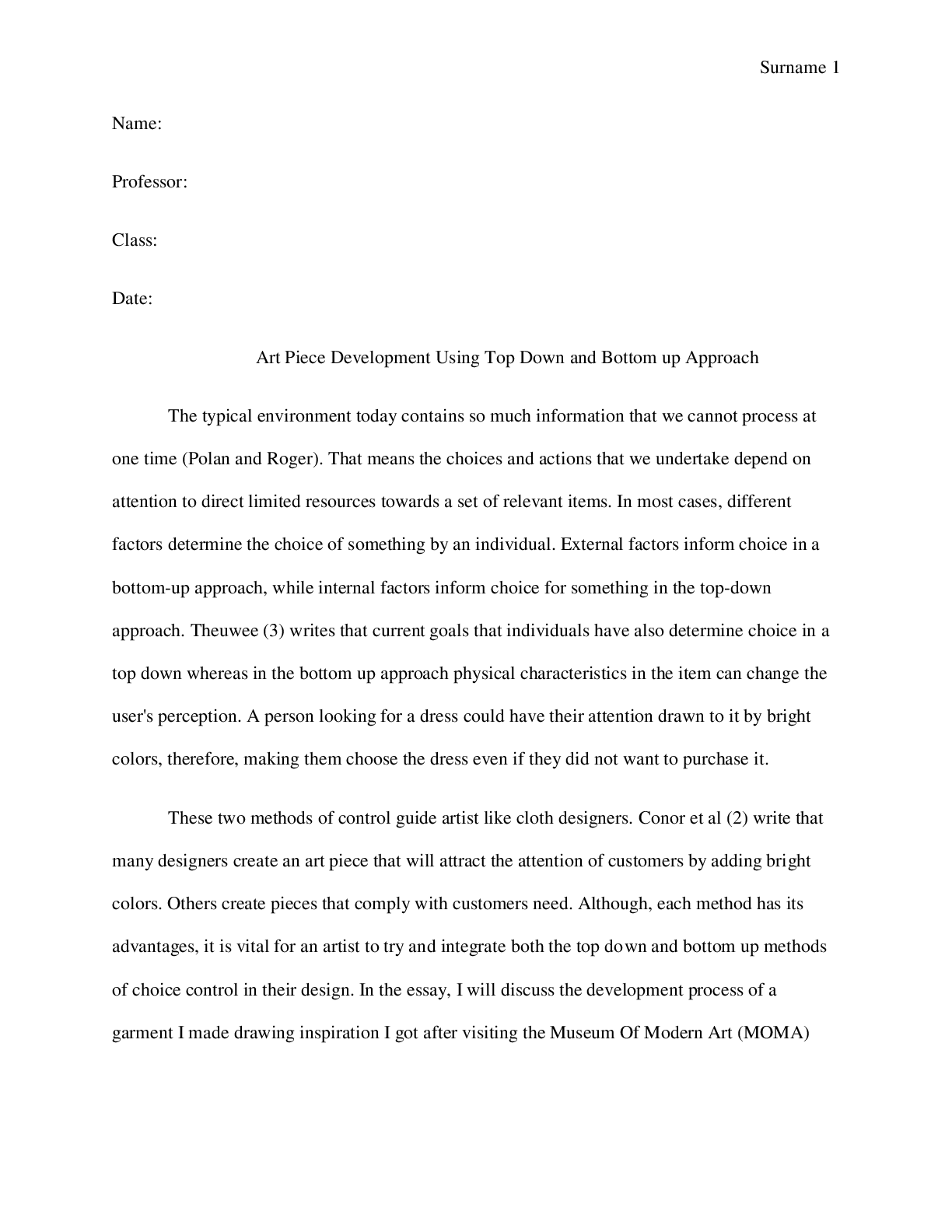*NURSING > ESSAY > Walden University -NURS-6630: Approaches to Treatments: Initial Post (Week 1: Foundational Neuroscie (All)
Walden University -NURS-6630: Approaches to Treatments: Initial Post (Week 1: Foundational Neuroscience) Explain the agonist-to-antagonist spectrum of action of psychopharmacologic agents.
Document Content and Description Below
Walden University -NURS-6630: Approaches to Treatments: Initial Post (Week 1: Foundational Neuroscience) Explain the agonist-to-antagonist spectrum of action of psychopharmacologic agents. Psyc... hopharmacological treatment agents vary for each impending condition, in regards to how they are prescribed. Hence, the treatment options for each psychopharmacological agent has the ability to function as an agonist or an antagonist (Stahl, 2013). With so many options from receptors, ligands, biological pathways, etc. there are many possibilities for therapeutics and treatments for diseases and disorders to determine which treatment option is best based on the individual. The effects that psychotropic drugs have on specific molecular sites can cause an influence in neurotransmission (Stahl, 2013). Compare and contrast the actions of g couple proteins and ion gated channels G- Couple protein neurotransmitter receptors do not have ion channels as part of the structure, instead they function as molecules called g-proteins (Hille, 2009). The receptors have two domains, an extracellular and intracellular domain binds neurotransmitter (Hille, 2009). Explain the role of epigenetics in pharmacologic action The role of epigenetics through modification determines if some genes will become a specific RNA and protein, or if it will be turned off, based on the structure of chromatin needed in the cell nucleus. The determining factor of whether genes will be silenced or expressed i Explain how this information may impact the way you prescribe medications to clients. Include a specific example of a situation or case with a client in which the psychiatric mental health nurse practitioner must be aware of the medication’s action References: Arrowsmith, C. H., Bountra, C., Fish, P. V., Lee, K., & Schapira, M. (2012). Epigenetic protein families: a new frontier for drug discovery. Nature Reviews Drug Discovery, 11(5), 384–400. https://doi-org.ezp.waldenulibrary.org/10.1038/nrd3674 Briddon, S. J., Gandia, J., Amaral, O. B., Ferre, S., Lluis, C., Franco, R., Hill, S. J., & Ciruela, F. (2008). Plasma membrane diffusion of g protein-coupled receptor oligomers. Elsevier, 1783(12), 2262-2268. doi.org/10.1016/j.bbamcr.2008.07.006 De Lera, A. R. & Ganesan, A. (2016). Epigenetic polypharmacology: from combination therapy to multitargeted drugs. Clinical Epigenetics. doi.org/10.1186/s13148-016-0271-9 Hille, B. (2009). G protein-coupled receptor. Scholarpedia, 4(12). doi:10.4249/scholarpedia.8214 Ingelman-Sundberg, M., Zhong, X. B., Hankinson, O., Beedanagari, S., Yu, A. M., Peng, L., & Osawa, Y. (2013). Potential role of epigenetic mechanisms in the regulation of drug metabolism and transport. Drug metabolism and disposition: the biological fate of chemicals, 41(10), 1725-31. Kouzarides, T. (2007). Chromatin modifications and their function. National Center for Biotechnology Information, 128(4) 693-705. Langenhan, T., Barr, M. M., Bruchas, M. R., Ewer, J., Griffith, L. C., Maiellaro, I., … Monk, K. R. (n.d.). Model Organisms in G Protein-Coupled Receptor Research. Molecular Pharmacology, 88(3), 596–603. https://doi-org.ezp.waldenulibrary.org/10.1124/mol.115.098764 Nutt, D. & Lingford-Hughes, A. (2007). Key concepts in psychopharmacology. Psychiatry, 263-267. Retrieved from http://www.med.monash.edu.au/assets/docs/scs/psychiatry/psychopharmacology/nutt-pharmacodynamics-2007.pdf Peedicayil, J. (2006). Epigenetic therapy-a new development in pharmacology. Indian J Med Res, 17-24. Retrieved from http://medind.nic.in/iby/t06/i1/ibyt06i1p17.pdf Stahl, S. M. (2013). Stahl’s essential psychopharmacology: Neuroscientific basis and practical applications (4th ed.). New York, NY: Cambridge University Press. Stahl, S. M. (2017). The prescriber’s guide (6th ed.). New York, NY: Cambridge University Press. Stefanska, B., & MacEwan, D. J. (2015). Epigenetics and pharmacology. British Journal Of Pharmacology, 172(11), 2701–2704. https://doi-org.ezp.waldenulibrary.org/10.1111/bph.13136 Vialou, V., Feng, J., Robinson, J., & Nestler, E. J. (2013). Epigenetic Mechanisms of Depression and Antidepressant Action. Annual Review of Pharmacology and Toxicity, 53(1), 59-87. [Show More]
Last updated: 1 year ago
Preview 1 out of 6 pages
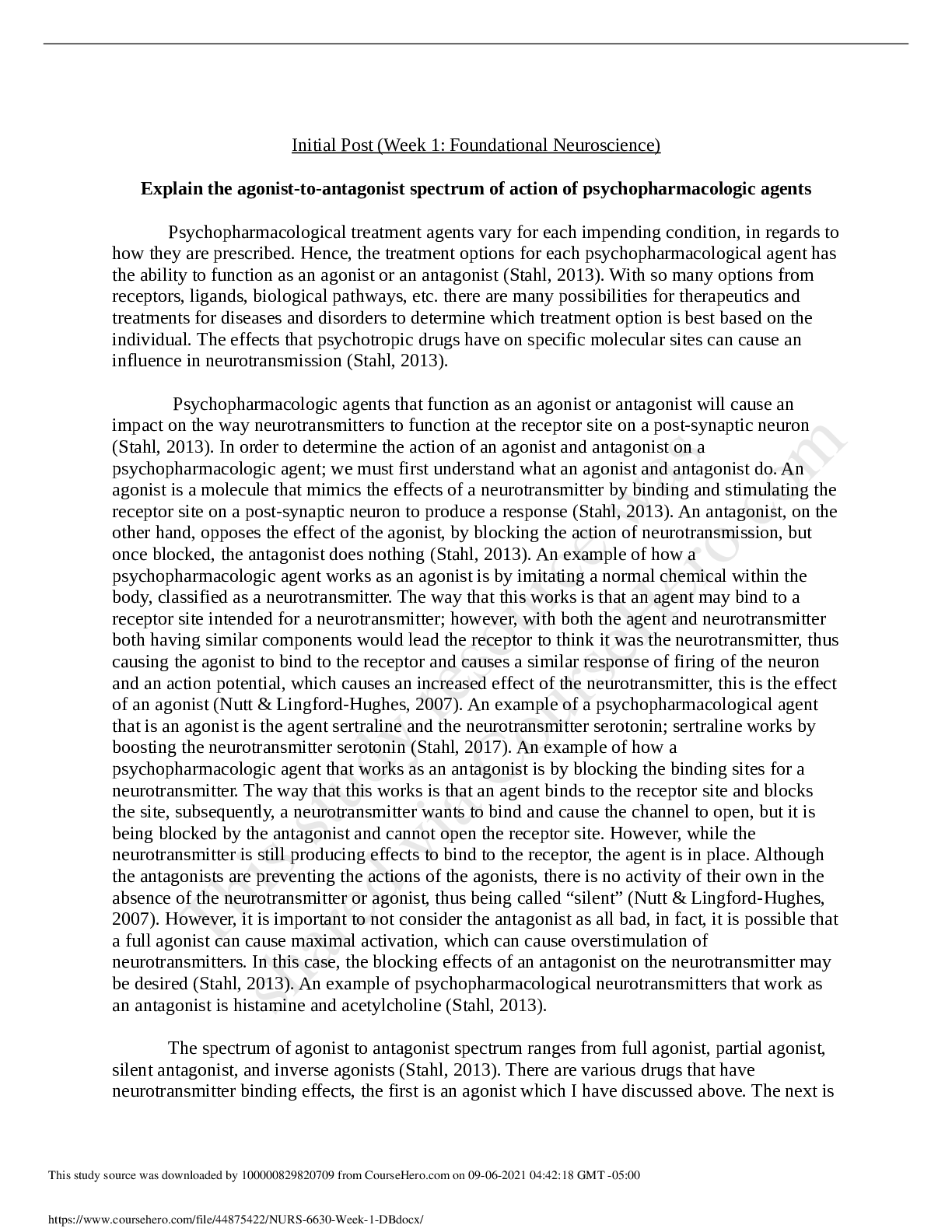
Reviews( 0 )
Document information
Connected school, study & course
About the document
Uploaded On
Sep 21, 2020
Number of pages
6
Written in
Additional information
This document has been written for:
Uploaded
Sep 21, 2020
Downloads
0
Views
51


